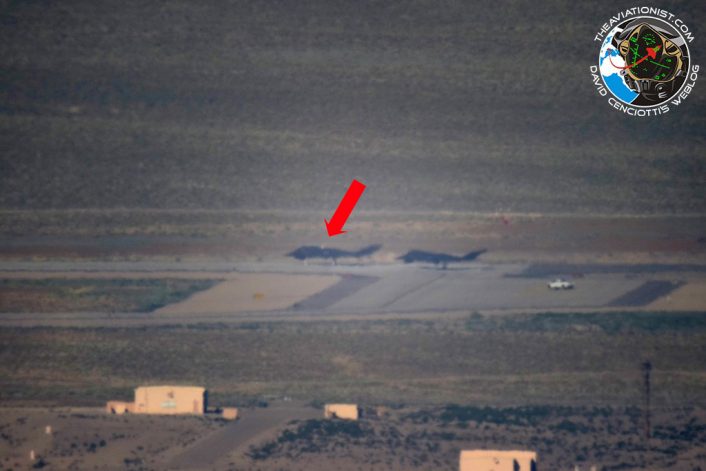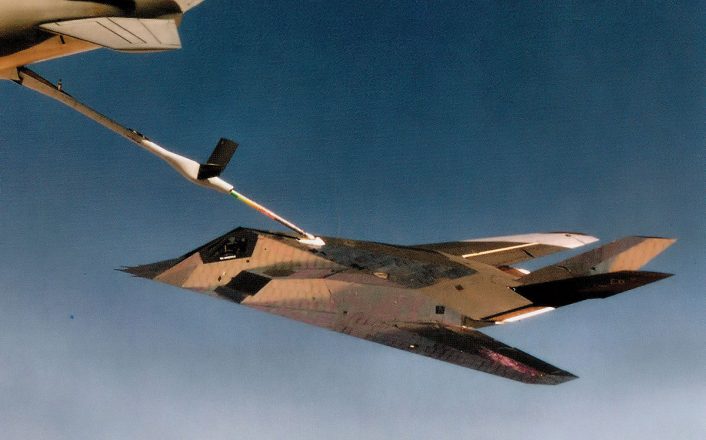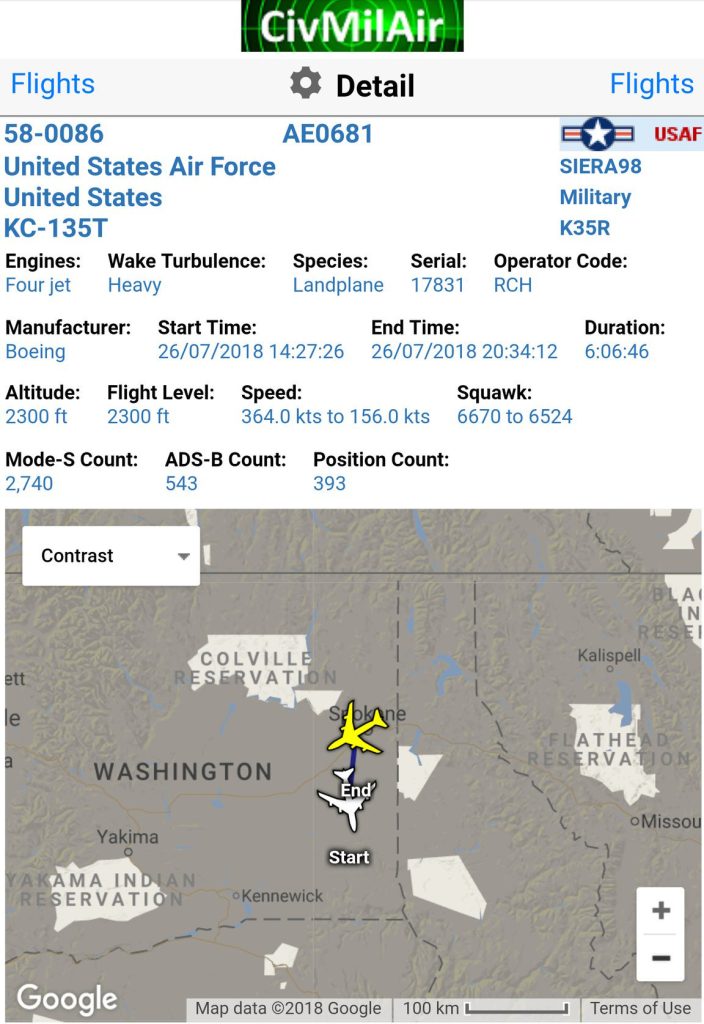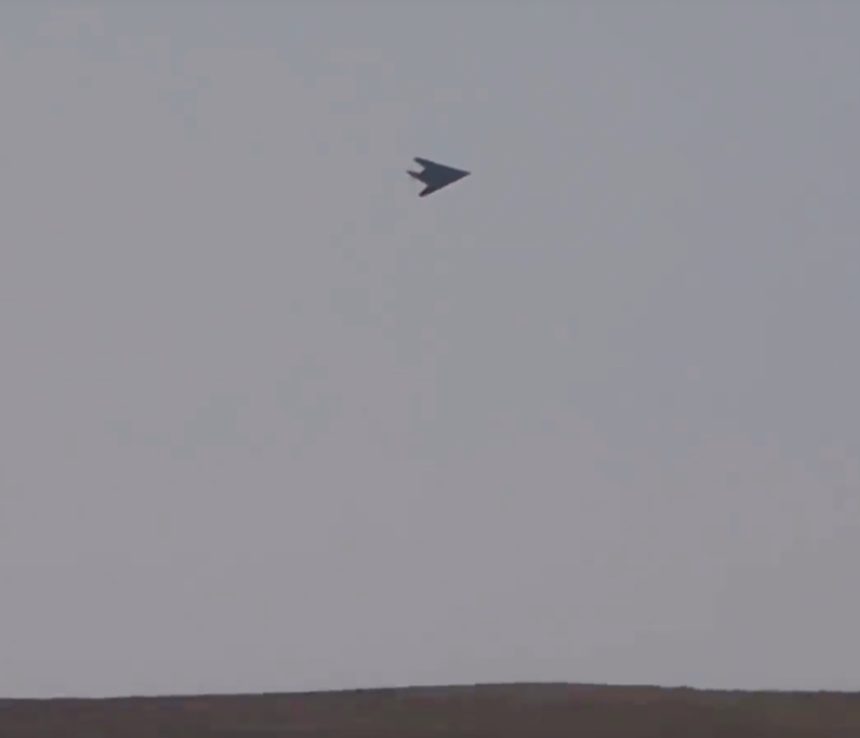10 years after their official retirement the “Black Jet” continues to fly. And no one seems to know what’s the purpose of their secretive missions. Here’s everything we know about their flights.
In the last few years we have documented the flights of some F-117 Nighthawk Stealth Jets over Nevada, missions that have continued to be carried out well after the aircraft was officially retired from active service in 2008.
Back in 2014, after a few videos and photographs had already appeared online, the U.S. Air Force admitted that the Black Jet was kept in a “Type 1000” storage at Tonopah Test Range (TTR) which meant that the type is to be maintained until called into active service: the U.S. considered the F-117 somehow useful in a current scenario, so much so they continued to fly some of the preserved jets every now and then, in plain sight, to keep the pilots (according to most sources, not U.S. Air Force aircrews but Lockheed Martin/contractor pilots) current and the aircraft airworthy and ready. Desert conditions of Nevada are perfect for maintaining the stealth jets in pristine conditions (due to the low level of humidity and hence, lower probability of corrosion), hence the reason to operate the enigmatic aircraft from TTR.
Mystery solved? More or less.
In July 2016, we published a video showing two F-117s flying together, filmed from the distant hills east of Tonopah Test Range: in examining the photos some readers noticed that when the two F-117’s were lined up on the runway, only one of them had what looked like a comms antenna extended on the dorsal spine. The other Nighthawk behind him did not have that. A new antenna? For doing what? A remotely controlled F-117? Hard to say because of the quality of the shot.

Then, last year the U.S. Air Force announced the decision to retire the fleet permanently, once and for all. In fact, “in accordance with the National Defense Authorization Act of 2017, passed Dec. 23, the Air Force will remove four F-117s every year to fully divest them — a process known as demilitarizing aircraft,” wrote Oriana Pawlyk last year. According to Pawlyk, one F-117 was scheduled to be divested this year and approximately four every year thereafter.
On Nov. 13, 2017, an F-117 was spotted on a trailer on US-95, south of Creech AFB, in southern Nevada: the sighting was consistent with the plan of divesting one F-117 by the end of 2017; the rest to be withdrawn from use at a rate of four every year, beginning in 2018. In other words, the one under tarp on a trailer was probably being transferred to the boneyard, to be scrapped or prepared for a museum. Then, in a fantast twist, on the following day, Nov. 14, 2017, at 09.20AM LT, another F-117 was spotted flying north of Rachel, Nevada chased by a Groom Lake’s two-seater F-16 (most probably the one that later paid visit to Star Wars Canyon).
Fast forward to Jul. 26, 2018, when Youtube user “pdgls” films two F-117 flying again at Tonopah Test Range. Here’s the footage:
The video shows two F-117s taking off in sequence as Night (or Knight – 9th FS callsign) 17 and 19. The shape of the Black Jet can be clearly identified as it maneuvers over TTR.
To me, the audio is actually even more interesting than the footage. Here it is (the Nighthawk stuff begins around 04:30 hours into the recording – for what’s before, read here):
Unlike all the previous sightings, this time the visual and audio documents (along with some ADS-B stuff) provide some additional, really interesting details. After departure, the two F-117 tanked with Siera 98 (not Sierra, at least according to the Mode-S transponder), a KC-135 from Fairchild Air Force Base. The type of activity the two jets carry out with the Stratotanker is not only routine: along with the standard “plugs” they also perform an emergency disconnect from the tanker. Then, the formation splits: Night 17 flies a test mission while Night 19 returns to the Tonopah Test area to perform pattern activity. Noteworthy, the 17 changes its callsign: no longer Night (or, as mentioned, Knight) but Dagger 17. Interestingly, Dagger is a very well known callsign in the Stealth Jet community: it was used by the 410th Flight Test Squadron, the joint test force of Lockheed and Air Force personnel at Groom Lake, Nevada (Det. 3, AFTFC).
In his interesting post on the sighting at The War Zone, our friend Tyler Rogoway also notices:
“before [changing callsign] we hear BLUE BIRD and BLONDE GIRL mentioned, which are likely controllers of some type. Then the F-117 checks in with ‘RAMROD’ and begins the testing. RAMROD tells the F-117 to ‘spin’ which usually means begin an orbit, and then we hear commands to execute a series of coded test cards.
RAMROD sounds like a sensor system of some type. Most likely it is the DYCOMS radar cross-section measurement facility at Area 51, which can surveil and validate the radar signature of an aircraft while in flight and at different angles in relation to the sensors on the ground. It’s also possible that RAMROD could be an airborne platform that offers similar signature diagnostic capabilities using an array of sensors.”
Whilst Dagger/Night 17 works with some sort of ground/radar facility, Night 19 continues its local sortie, made of a long series of low approaches, ILS localizer approach with circling, touch and gos, etc: the kind of pattern activity you would expect from an aircraft not involved in any operational work.

ADS-B logs provide some details about the support mission flown by the KC-135, a Stratotanker, #58-0086, that had flown the previous day (Jul. 25) at EAA AirVenture Oshkosh. The tanker flew from Fairchild AFB, Washington, flying a +6 hour mission. We don’t know whether Siera 98 also refueled other aircraft during that time: if not, it’s a considerable effort for just a routine mission of a pair of preserved aircraft.

Needless to say, the reason for the F-117 flights remains a mystery. Whilst the pretty basic pattern activity carried out by Night 19 is coherent with a periodic flight required to maintain currencies and airworthiness certificates, the seemingly more complex stuff conducted by Night 17 after it changed callsign to Dagger 17 seems to suggest there is some more interesting work for Black Jet. Indeed, as often explained here at The Aviationist, although it is a “legacy” radar-evading aircraft, the F-117 can still be used to support a wide variety of tests and developments: new radar or Infra Red Search and Track systems, new SAM (surface to air missiles) batteries, new RAM (Radar Absorbent Material) and coatings; or even 6th generation combat planes and next generation AEW (Airborne Early Warning) platforms. They might be supporting stealth UCAVs (unmanned Combat Aerial Vehicles) research and, as explained above, someone has also speculated some have been converted into drones. Moreover, we can’t completely rule out the possibility Nighthawk are used as adversaries/aggressors against real or simulated systems, if not within the context of a Red Flag (the audio you can hear above, from the beginning to 04:30 hours, was recorded during Red Flag on Jul. 25, although the activity is probably completely unrelated to the F-117 sorties) as part of complex LVC (Live Virtual Constructive) scenarios, where actual assets are mixed up with virtual ones.
What do you think? Any idea?









